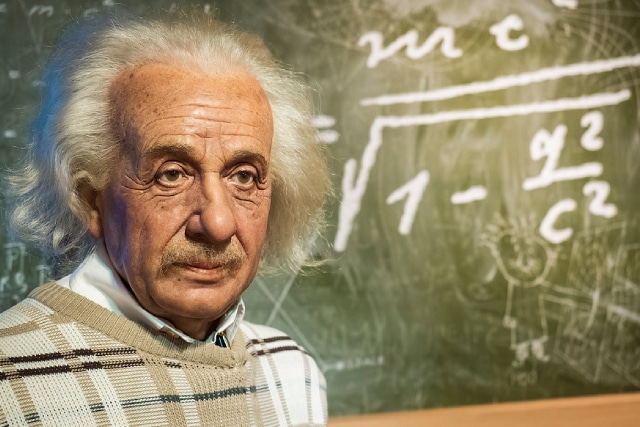The theory of Relativity, which Albert Einstein developed starting in 1905, describes how objects behave in space and time and can be used to forecast things like the existence of black holes, the gravitational lensing of light, and the behaviour of planets in their respective orbits.
The idea is remarkably straightforward. The first thing you must know is that no point of reference is “absolute.” Gauging an object’s momentum, velocity, or perception of time always depends on something else. Second, it makes no difference who measures light speed or how quickly they are moving while doing it. Thirdly, nothing travels more quickly than light.
The inferences we can make from Einstein’s most well-known hypothesis are significant. Suppose the speed of light is constant. Then an astronaut travelling very quickly compared to Earth will experience time passing more slowly than an observer on the planet. For the scientist, time actually seems to slow down; this is known as time dilation.
Any item in a strong gravitational field accelerates, which causes time dilation. While this is happening, the astronaut’s spacecraft undergoes length contraction, making it appear as though it is “squished” in the motion’s direction if you were to take a photo of the ship as it flew by. The person on board, however, would perceive everything as usual. In addition, from the perspective of people on Earth, the bulk of the spacecraft would appear to grow.
But to observe relativistic effects, you don’t need a spacecraft travelling at nearly light speed. In fact, many examples of Relativity that we can see in modern technologies and everyday life prove Einstein was correct. Here are just some of them:
1. GPS
A GPS (global positioning system) device that informs you it’s, for example, 0.8 km away from the next petrol station would be 8 kilometres off after a day if relativistic effects weren’t taken into account.
Special Relativity states we ought to observe the satellites’ clocks ticking more slowly because a spectator on the Earth sees the satellites moving relative to them.
While not moving at light speed, GPS satellites are moving fairly quickly (at a rate of about 10,000 km/h). Add in the fact that they transmit messages to the Earth’s surface, which is more affected by the planet’s gravity. This contributes about 4 microseconds of relativistic time each day, a negligible but noticeable delay. The time increases to around 7 microseconds when the impacts of gravity are taken into account.
2. The colour of gold
Since most light is reflected, some light is also captured and reemitted as electrons “bounce and fall” within orbitals. Most metals are “shiny” as a result.
But the atom of gold is very weighty. Due to the inner electrons’ extremely rapid motion (approximately half of the speed of light), the Theory of Relativity causes their mass to rise and their length to shorten. They gain more speed and, as a result, take shorter routes.
Since these electrons have nearly the same amount of energy as the ones in their outer shells, they receive and reflect light at longer wavelengths. This indicates that more light in the blue part of the spectrum is absorbed than is “normal.”
This implies that because the light rebounded off of the gold has a longer wavelength as compared to blue light; thus, it contains less blue and violet light, which gives gold its yellowish colour.
3. Electromagnetism
Relativity is how electromagnets operate. The conducting substance is electrically neutral and without either net negative or positive charge when direct current flows through a single wire.
Let’s now place a second identical cable besides the first one.
The electrons within the initial wire “see” the electrons inside the second wire as inert if the currents flow with the same intensity and direction. The protons in the two lines seem to be moving to the electrons. There is a more significant positive charge for every length of wire than the negative charge because of relativistic length contraction, which causes them to look closer together. The two lines also repel because like charges repel each other.
Reversing one of the currents in a wire will have the opposite impact, attracting the other wires and producing an electromagnet.
Conclusion
Einstein’s theory of Relativity was life-changing, but it also helps a great deal in explaining what we already see and experience. Physics is inextricably part of life. That’s why it’s a good idea to remain curious about the world around you to succeed academically. Tuition physics is an O level physics tuition centre that cultivates a love of science and is equipped with the qualified tutors necessary to achieve your academic goals. Contact us today to learn more!


